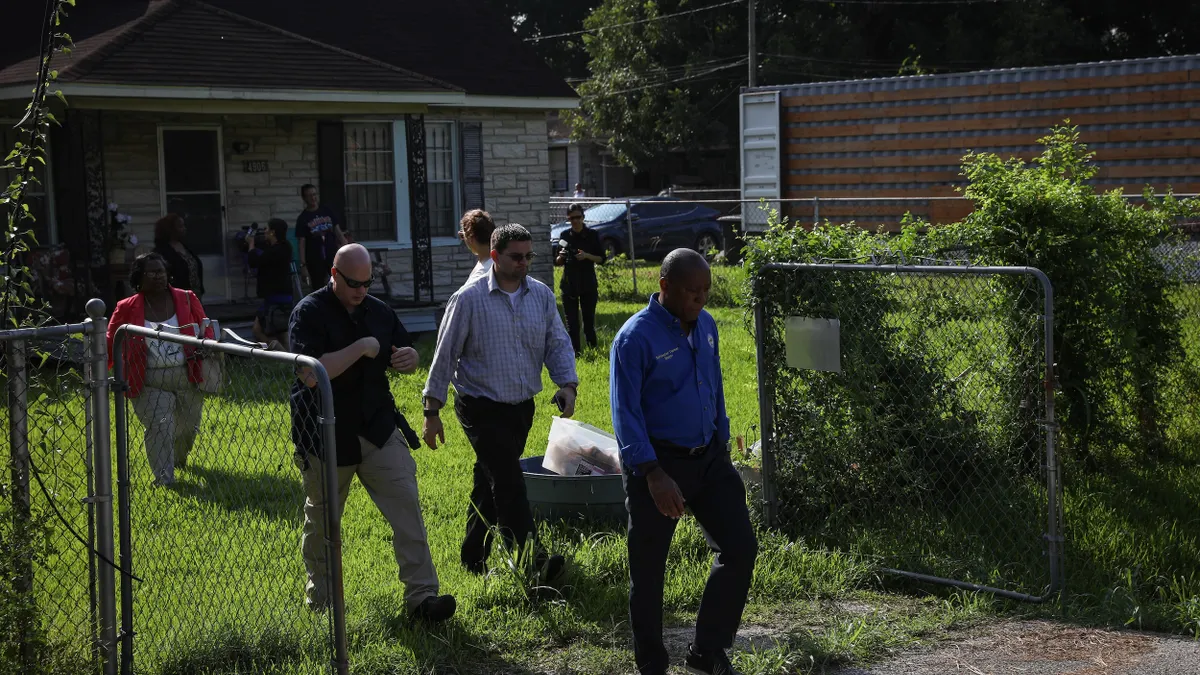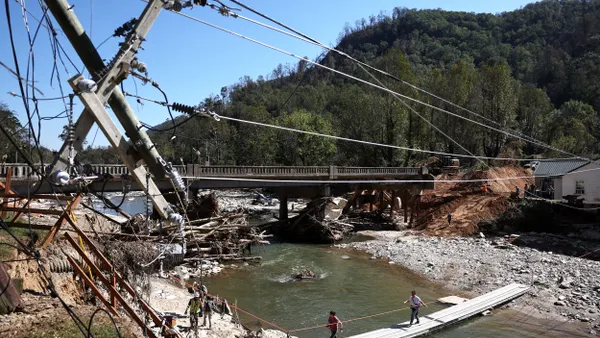Three years after Hurricane Harvey struck in 2017, Houston’s Resilient Houston program set a goal of removing all habitable structures – 6,000 to 7,000 homes – from the city’s floodway by 2030.
“It was an incredibly ambitious target,” Marissa Aho, who served as Houston’s first chief resilience officer from 2019 through 2021, said during a panel at the Urban Land Institute’s Resilience Summit last week. “But setting a target for 20 or 50 or 100 years would not have resulted in the same urgency.”
Houston is far from reaching that goal, Aho said, but many good lessons have been learned. An important one is that creating opportunities for residents to “buy in” is as important as offering them a buyout.
“When you get a buyout, typically, you can’t afford to stay in your neighborhood with the money you get,” she said. So, Resilient Houston is working to create affordable housing in communities near the neighborhoods where residents are being displaced to minimize disruption.
Asking people to leave their homes and relocate from areas at risk of repeated environmental threats – a practice known as managed retreat – has never been an easy process. Loss of federal funding and support is now making it even harder.
“The last few months have been a doozy,” said Aho, who is now director of the King County, Washington, Executive Climate Office.
“The traditional approach that folks have relied on for at least the last 10 years is shifting under our feet,” she added. “We’re having to figure out what else could be in the toolbox to supplement, to replace, to do things differently.”
The panelists outlined a host of tools local governments can use, from regulatory actions to partnerships with nonprofits to acquire, manage and steward at-risk properties while providing displaced residents with services like relocation counseling and financial assistance to make the transition as painless as possible.
Local governments are a key stakeholder in managed retreat efforts, said Hannah Glosser, a director with New York consultancy HR&A Advisors.
But, she said, “as we all know, there are a lot of other incredibly pressing challenges facing governments today.”
City leaders also tend to balk at facilitating the loss of taxpayers from their jurisdictions, Glosser said. But as the “prevailing belief that FEMA will bail us out” when disaster strikes is shattered, municipal officials are starting to take a closer look at managed retreat, Glosser said.
Alison Branco, director of climate adaptation for The Nature Conservancy in New York, urged audience members to take advantage of the assistance nonprofits like land trusts, land banks and community development corporations can provide in managing transactions and stewarding properties after they’re purchased.
“Ideally, you want a long-term steward that could do some restoration and create an amenity for the community,” she said. “Sometimes, the municipality is willing and able and really wants to, but a lot of times they just say, ‘no thank you,’ and then who’s going to take it?”
Nonprofits also have a role to play in relocation and financial counseling and other social services, Branco said. The Nature Conservancy is piloting a program that gives cash to help people from the time they agree to a buyout to when the sale closes because the dropout rate during that period is typically about 50%, she said.
“What we’re doing is essentially paying people for the privilege of keeping their flood-prone house empty,” Branco said. Eventually, The Nature Conservancy hopes the program can become part of a government loan program.
Cooperation between governments, nonprofits and the private sector is crucial, Aho agreed.
“Everyone has a role,” she said. “But in my experience, government should be leaning on partners more than it tends to.”












